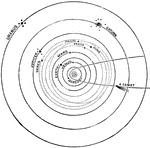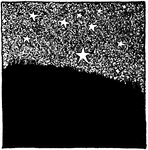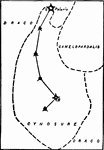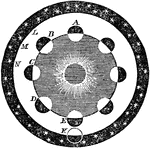The Astronomy ClipArt gallery offers 89 images of the tools of astronomy as well as numerous stars and constellations that can be seen in the night sky. See also the Telescopes and Binoculars ClipArt gallery.

Planets
The celestial bodies that revolve around the sun and receive light and heat from it. This diagram shows…

Pole Depression
"Two hoops of thin iron are placed upon an axis which passes through their poles. The two ends of each…

Spheres of the Ptolemaic System
A diagram showing the order of the universe as expounded by Ptolemy. Its basic concept surmises that…
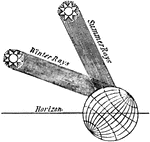
Rays
"Summer and Winter rays.—Let us suppose that the rays falling perpendicularly on a given extent…
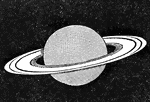
Saturn
"Saturn is the 6th of the major planets in order of distance from the sun, and the outermost known to…

Saturn
One of the major planets, which is siexth in distance from the sun. It is the second planet in size,…

Seasons
"Suppose the Earth to be in her Summer solstice, which takes place on the 21st of June. At this period…
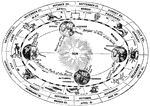
Seasons etc.
A diagram that shows constellations, seasons, equinoxes, solstices and astrological signs.

Seasons from Earth's Orbit
"Relative positions of the earth and the sun during the spring equinox, the summer solstice, the autumn…
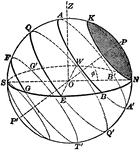
The Sphere of the Sky
"One standing at O will only see the half of the Sky which is above the circle NESW. The whole sky will…
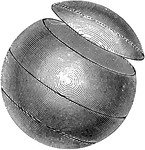
Small Circle
A small circle is one formed by a plane which does not cut the earth into two equal parts. The small…

Summer Solstice
"Relative positions of the earth and the sun on June 21, the summer solstice. Summer and long days north…

Winter Solstice
"Relative positions of the earth and the sun on December 21, the winter solstice. Winter and short days…
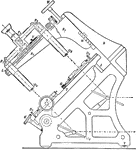
Hartmann Spectrocomparator Diagram
A diagram of Hartmann Spectrocomparator device to measure accurate the star's displacement. The photographed…

Hartmann Spectrocomparator
A Hartmann Spectrocomparator device to measure accurate displacement of the star by measuring the relative…
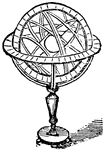
Armillary sphere
"A number of rings arranged round a centre, so as to represent a sphere; used to illustrate the relative…
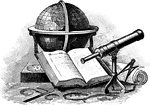
Still Life with Globe and Telescope
Still life arrangement including a globe, telescope, book, right angle, rolled map, and dividers.
Sun Eclipse
"When the moon psses between the Earth and Sun, there happens an eclipse of the Sun, because then the…
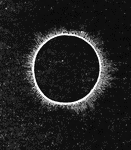
Corona of the Sun
"Corona (a crown) in astronomy is a halo or luminous circle round one of the heavenly bodies; specifically…
Umbra
"Umbra and Penumbra. A solar eclipse, with the penumbra, d, c, and the umbra or dark shadow is seen…

Walnut Street Front
David Rittenhouse erected a temporary observatory for the purpose of observing the transit of Venus…

